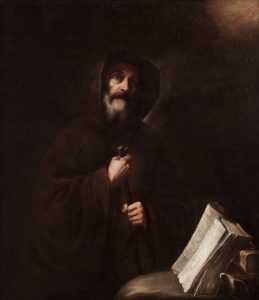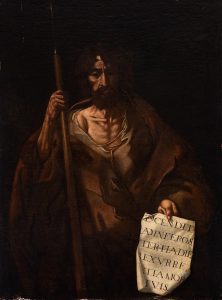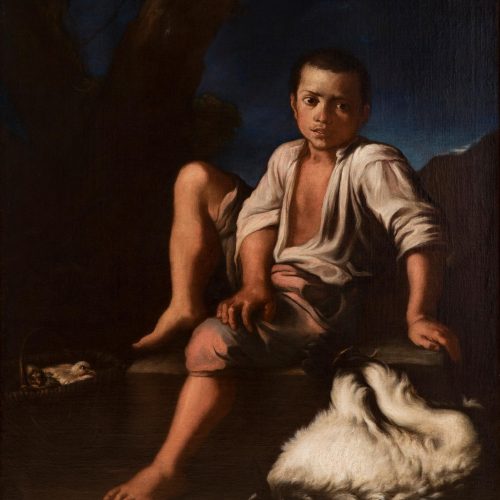The path of chiaroscuro, from Italy to Spain.
One of the main features of the Baroque is, without a doubt, its theatricality. An exaggerated vision of reality that powerfully appeals to the viewer, thus creating a clear, direct and deeply attractive message. The light in the painting is reminiscent of that of a stage, it is capable of directing the gaze towards what is important and charging it with the necessary drama. The strong light contrasts produce volumes with greater depth and dynamism, achieving the sensation of escaping from the canvas.
One of the most relevant figures in this technique was José de Ribera, who would end up falling within the spectrum of Tenebrismo. This Spanish artist was crucial to transfer these new ideas to our country. An example to understand the two techniques can be found in the catalog of our next auction with the work of Ribera’s workshop titled San Francisco de Paula (lot 35115857). The opaque and shapeless backgrounds seem to engulf in the darkness the silhouette of the saint in which we can barely glimpse part of his face and hands, as well as the Holy Scriptures.
A Spanish work that follows the tenebrist aesthetic, looking at both Ribera’s models and the works of Spanish painters such as Zurbarán , is that of the Cristóbal García Salmerón circle, Santo Tomás (lot 35256770). The character is presented as a popular type, so much so that he could be contemporary in almost any era. His fixed and frontal gaze at the viewer is filled with intensity by the light that falls on him obliquely and ends up projecting a mysterious relief. The foreshortening produced by your hand showing the paper causes a sensation of additional depth, almost inviting you to join the interior of the painting.
The next batch 35272594, San Jerónimo Penitente is a particularly striking sample because it is an unfinished work in which we can see part of the creative process, using the dark light as a resource . The very base of the canvas is of such a dark earth color that it forces the painter to draw outlines and silhouettes from an almost pure black. The volumes are acquiring shape as the painter was applying notes of light on that base with remarkable ease and speed. A fantastic resource to understand the way of working of a painter.
Finally, one of the best painters in the Murillo circle, Pedro Núñez de Villavicencio, should be highlighted. Moving away from the soft and sweet tones characteristic of the Sevillian master, he paints a young shepherd with a lamb and some birds (lot 352563229). This traditional scene is the result of the painter’s personal vision of the reality of the moment, halfway between the anecdotal and the aesthetic, with the miserable and crude part . An example of an idea close in time with a similar creative process occurred in Italy in genre painters such as the Bambocianti, Monsú Bernardo or Giacomo Ceruti.








